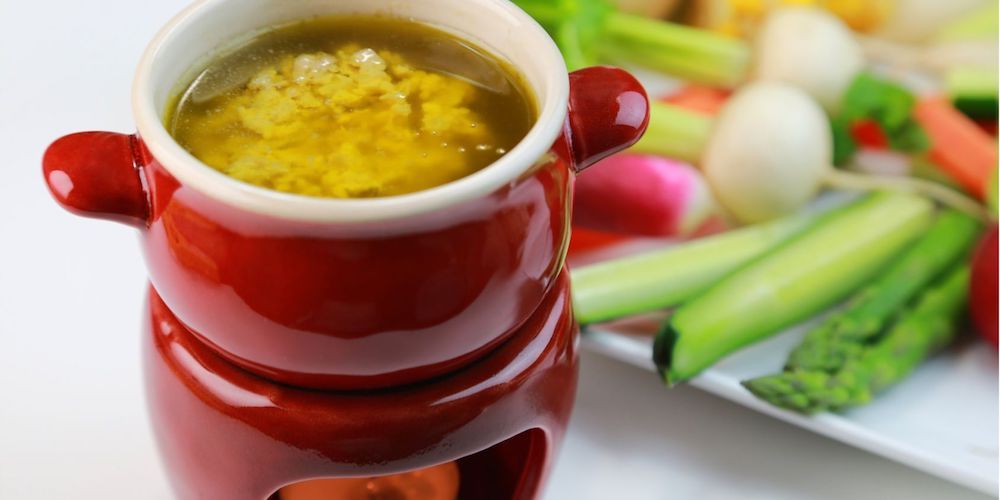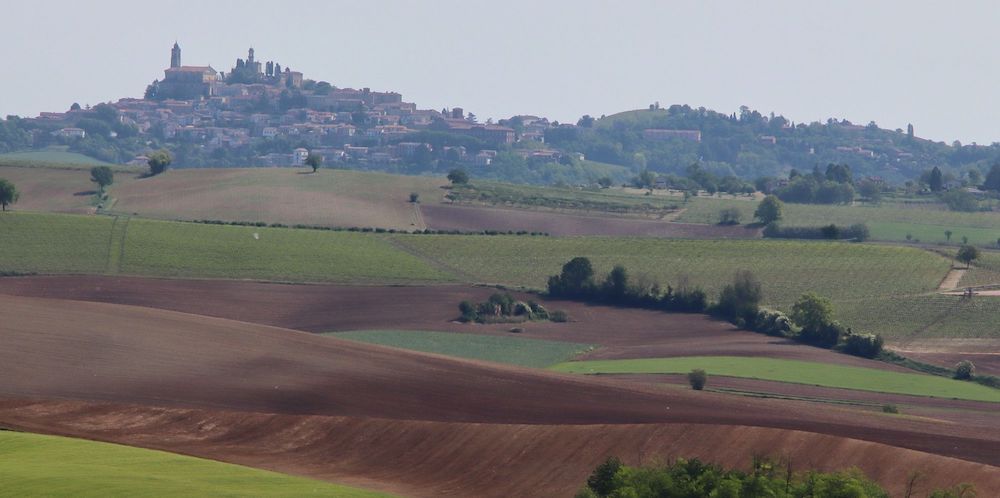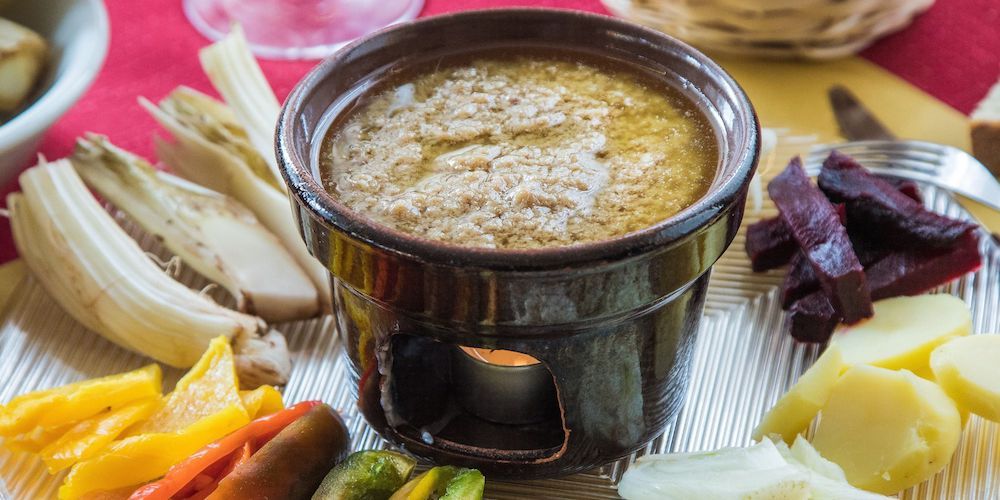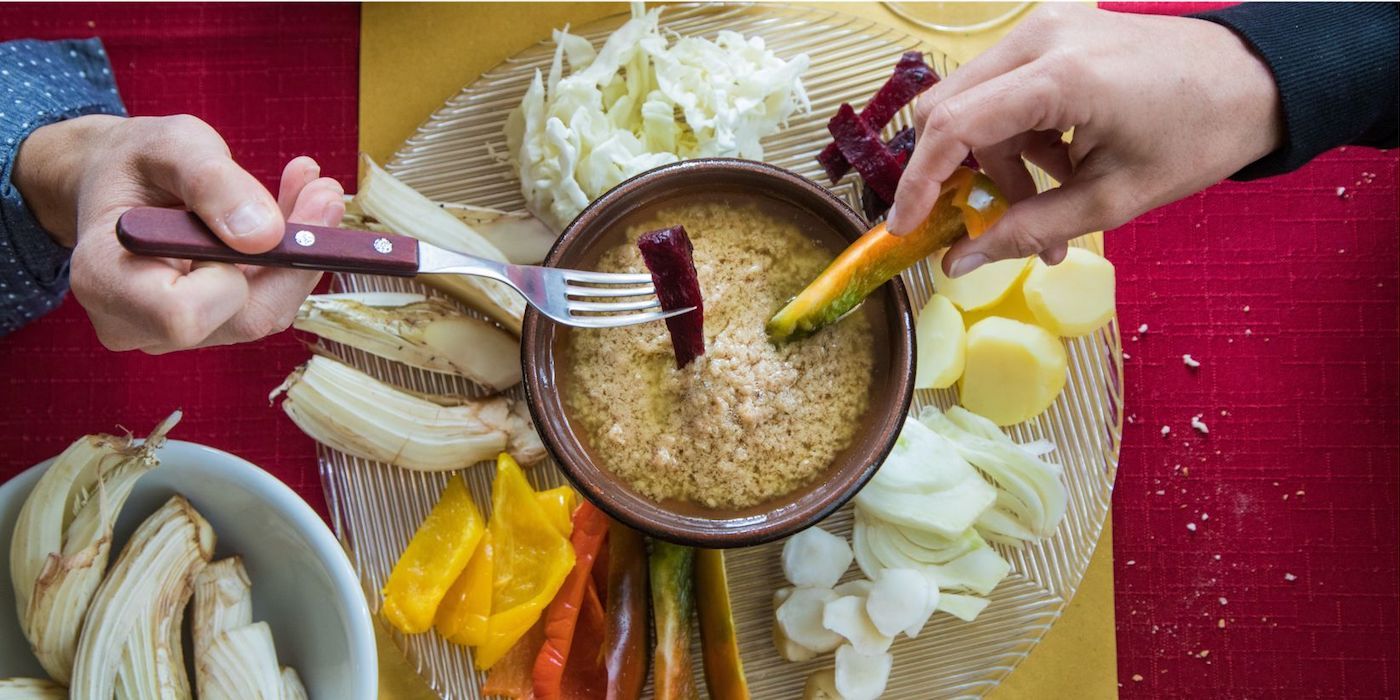Bagna Cauda is part of the food and wine culture of Piedmont, a region which offers some of the most delicious traditional recipes of Italy through the use of local products of excellence such as meat, truffles, cheese and wines.
However, as we are going to see, the recipe of Bagna Cauda utilize some ingredients (anchovies and extra virgin olive oil) which are different from those more typically Piedmontese. Then how is it that this dish has become a historic symbol of the regional cuisine?
To better understand it, we will not only list the ingredients and the procedure to cook Bagna Cauda to perfection, but we will also take a real journey to discover the history and curiosities of this true icon of the culinary tradition of Piedmont.

How to cook Bagna Cauda in Piedmont: a journey to the origins of the recipe

Although the first official recipe about how to cook Bagna Cauda was written in 1875, the origins of this dish are definitely older and probably date back to the medieval period. The farmers ate it to celebrate the end of the harvest, which was a particularly important moment in a region like Piedmont, where viticulture was widespread already in Roman times.
Therefore, Bagna Cauda gave a real sense of conviviality: it was eaten in the dian, a clay pot that was used by all diners and kept warm thanks to a s-cionfetta placed under it. The s-cionfetta is a sort of warmer full of coals that can be used even today, while the dian has been replaced by the fujot, which is a pot of the same kind assigned individually to each guest.
This is historically a poor recipe. Among the main ingredients, in fact, there’s garlic, which in the Middle Ages was not a food particularly appreciated by nobles. Speaking of history, the presence of extra virgin olive oil and anchovies is also very significant, because they are products that today are not autochthonous of the Piedmontese territory.
In reality, at least until the 18th century, oil was to be considered a local good. It was in fact produced in the region of Basso Piemonte, without forgetting that the Kingdom of Sardinia, of which Piedmont was part, also included Liguria and the area of the County of Nice, where the production of olive oil was (and still is) particularly important.
What about the use of anchovies? They came through the "salt road", a network of paths (which varied from region to region, to the point that there were many different "salt roads") that served as a commercial route for the transport of sea salt and, in this case, also anchovies, which reached the Piedmontese territory pressed inside the barrels.
Discover Piedmont with Turin + Piedmont CardBagna Cauda in Piedmont: when and where it is prepared

As we’ve seen, in Piedmont the custom is to eat Bagna Cauda in autumn, in particular after the harvest: every year in Asti, between late November and early December, is celebrated the Bagna Cauda Day, one of the most picturesque autumn festivals in Italy.
In fact, it’s an ideal food to enjoy in company and for this reason, over time, it has become a typical dish of Christmas holidays, and particularly suitable for the cold winter months: as a matter of fact, Bagna Cauda literally means hot sauce!
Basso Piemonte, as well as the place of origin of Bagna Cauda, is also the location where the recipe is particularly common. It’s the southern area of the region, which goes up to the mountains of the Ligurian Apennines and includes Monferrato, Langhe and Roero, beautiful places to visit and renowned both for their hilly landscapes, both for their extraordinary food and wine products.
Yet, despite some typical recipes of these territories are undoubtedly very complex to prepare (the Gran Bollito Misto, for example!), Bagna Cauda remains a dish that requires a preparation of medium-low difficulty, characterized by strong flavors and that involves the use of few, tasty ingredients.
Ingredients and procedure: how to cook Bagna Cauda

To cook Bagna Cauda we need (portions per person):
- 1 head of garlic;
- half a glass of extra virgin olive oil;
- 50g of salted Spanish red anchovies;
- 1 small glass of red wine.
This is what is provided by the official recipe deposited in Castigliole d'Asti by the Accademia Italiana della Cucina in 2005, which can then be accompanied by raw or cooked vegetables, including:
- cardoon from Nizza Monferrato;
- spring onions immersed in Barbera;
- peppers;
- potatoes;
- beetroot.
For the preparation, we must use an earthenware pot and a s-cionfetta, which can be replaced more simply by an alcohol burner.
The first operation will be to soak the pot in cold water for a couple of hours, so that you don’t risk to damage when using it during cooking.
Then we desalinate and debone the anchovies, wash them in red wine and then dry and place them in a container. We also take the cloves of garlic, taking off the inner bud and cutting them into slices.
Let’s recover the earthenware pot and dry it well. Put it on a very, very low heat, adding a glass of oil, combining the anchovy fillets and garlic slices and starting to mix. Then we cover everything with the remaining oil and cook for about half an hour taking care not to fry the wet. As for the oil, we said that half a glass is for a single portion of Bagna Cauda, so the total amount depends on the total number of diners.
At the end of the cooking, as you like, you can add a piece of butter (must be very fresh), particularly suitable for those who prefer softer flavors. Also you can choose as an accompaniment some of the vegetables we have listed above.
Finally, we serve the outcome in the classic fujot and keep the pot warm thanks to the s-cionfetta or the most modern alcohol cooker (to be used always being very careful!).
A

Since we are in Piedmont, we can say that our Bagna Cauda is a success only by finding the ideal match with one of the delicious local wines.
As this dish is characterized by intense and decisive flavors, we have to choose a wine of character that can support its complexity. For this reason, a Piedmontese red is the most suitable option: a Barbera d'Asti DOCG, for example, can be the perfect complement for the occasion.
It’s a wine with an enveloping aroma and a dry and lively taste, which is perfectly linked to soups of various types, and whose hints of red fruit are integrated with the flavors of Bagna Cauda, enhancing its sapidity and really making us mouth-watering!
Discover the sweet side of TurinAbout the author
Written on 08/01/2024



Alessandro Savino
Let's learn how to cook Bagna Cauda by discovering curiosities and secrets of one of the tastiest recipes of the Piedmontese gastronomic tradition.